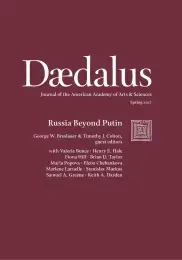The Prospects for a Color Revolution in Russia
From 1998 to 2005, six elections took place in postcommunist Europe and Eurasia that led to the defeat of authoritarian incumbents or their anointed successors, the empowerment of opposition forces, and, thereafter, the introduction of democratic reforms. Because Putin’s regime closely resembles those regimes that were successfully challenged by these dramatic changes in politics, Russia is a logical candidate for such a “color revolution,” as these electoral turnovers have been termed. Moreover, the color revolutions have demonstrated an ability to spread among countries, including several that border Russia. However, the case for a color revolution in Russia is mixed. On the one hand, the many costs of personalized rule make Putin’s Russia vulnerable. On the other hand, Putin has been extraordinarily effective at home and abroad in preempting the possibility of an opposition victory in Russian presidential and parliamentary elections.
The global wave of democratization, which began in the mid-1970s and continued through the mid-1990s, had two effects. One was to significantly expand the number of democracies in the world. The other was to transform the nature of dictatorship. While military and Communist Party regimes served as the most common forms of autocratic rule during the Cold War, a relatively new type of dictatorship became the global norm after. This version of dictatorship has been variously termed “hybrid,” “competitive authoritarian,” or “electoral authoritarian.”1
These regimes originate in the failure of their predecessors to grow the economy and provide political order and national security.2 Their defining feature is that they straddle democracy and dictatorship. On the one hand, they claim and appear to be democratic, given their liberal constitutions, representative institutions, and competition among parties and among candidates for political office. On the other hand, their leaders purposefully compromise . . .
